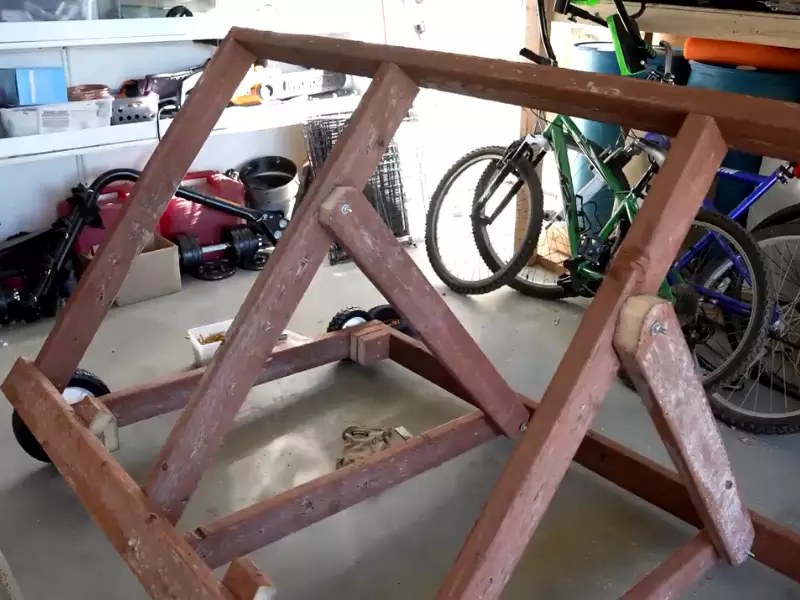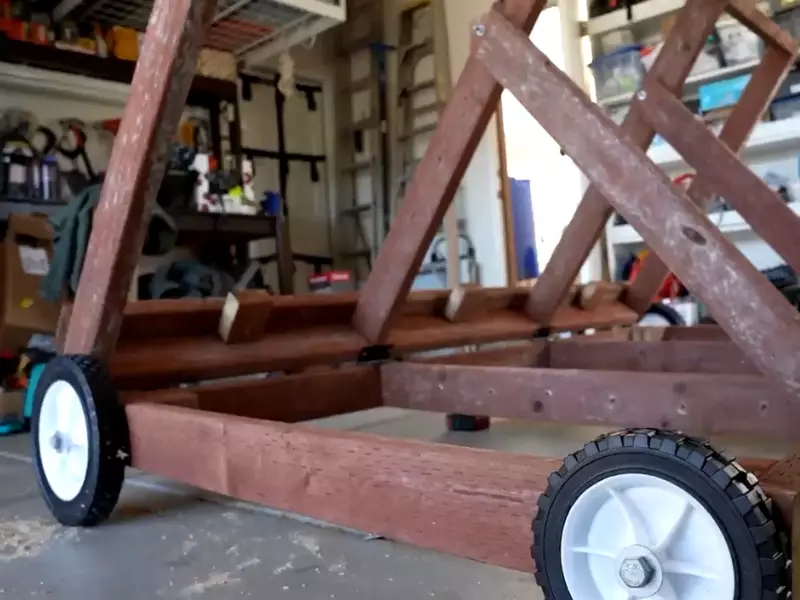The world is rapidly moving towards renewable energy, and solar power stands at the forefront of this revolution. A critical aspect of solar power generation is the design of solar panel stands, encompassing racking, mountings, and fixings. This article delves into the nuts and bolts of solar panel stand design, providing a comprehensive guide for those interested in implementing solar energy solutions.
Solar panel stand design is an intricate process that involves the thoughtful integration of several elements. Effective stand designs enhance the efficiency and durability of solar panels, contributing to optimal power generation. From rust-proofing to adjustable angles, numerous features can augment the performance of solar panel stands.
Let’s embark on a journey to explore the various facets of solar panel stand design. This detailed guide aims to enlighten you on the different types of solar panel stands, their unique features, and the crucial factors to consider when choosing a solar panel stand.
Solar Panel Stand Designs
Solar panel stand design refers to the structural plan that holds and positions solar panels to capture maximum sunlight. These stands are specifically designed to withstand various environmental conditions while maintaining stability and durability.
A solar panel stand design encompasses three critical components – racking, mountings, and fixings. The racking system is like the skeleton of the stand, holding everything together.

Mountings, on the other hand, secure the solar panels onto the racking system, while fixings, such as bolts and clamps, ensure everything is tightly attached and secure. These components interact in harmony to create a robust structure capable of supporting the solar panels while enhancing their efficiency.
Core Features of Solar Panel Stand Design
Understanding the core features of a solar panel stand is vital for anyone looking to harness solar energy efficiently. Let’s delve deeper into these features and their significance:
Rust-Proofing
Given that solar panel stands are exposed to the elements, the ability to resist corrosion is of paramount importance. Rust-proofing is achieved by using materials such as aluminum and stainless steel, both of which are known for their durability and resistance to rust. A rust-proof stand not only ensures longevity but also minimizes maintenance requirements.
Long-Life
Solar panels are a long-term investment, typically lasting between 25-30 years. It is essential that the solar panel stands are designed to last for a similar timeframe. The stand’s longevity hinges on several factors, including the materials used, design of the stand, quality of construction, and the environmental conditions where the stand is located.
Universal Design
A universal design in the context of solar panel stands refers to a design that can accommodate different types of solar panels. Such a design brings flexibility to the table, allowing users to upgrade or replace solar panels with minimal adjustments to the stand. This feature is especially beneficial given the fast-paced advancements in solar panel technology.
Solar Panel Stands / Racking Types: A Detailed Analysis
Different situations call for different types of solar panel stands. Here, we break down the common types of stands and their unique characteristics:
Rooftop Solar Panel Stands
Installed atop residential or commercial buildings, rooftop solar panel stands are a popular choice due to their space-saving design and high exposure to sunlight. While the ideal tilt angle for these stands varies depending on the geographical location, a properly installed rooftop stand can maximize solar energy production.
Wall-Mount Solar Panel Stands
When roof space is limited or not suitable for solar panel installation, wall-mount stands serve as a viable alternative. These stands are usually installed on south-facing walls (in the northern hemisphere) to ensure optimal sunlight capture.
Mounting Brackets
Often overlooked, mounting brackets play a crucial role in solar panel stand design. They securely attach the solar panels to the racking system, ensuring stability even in adverse weather conditions. Various types of mounting brackets exist, each suitable for different types of panels and installation setups.
Stand-Alone Solar Panel Stand
These free-standing structures are ideal for ground-mounted solar panels. Predominantly used in large-scale solar farms or when roof or wall mounting is not feasible, stand-alone stands offer the flexibility of positioning and angle adjustment for optimal sunlight exposure.
Delving into Solar Panel Stands / Racking Systems
Exploring the components of solar panel racking systems gives us a glimpse into their intricate design:
Roof Attachment
This component anchors the entire racking system to the roof, ensuring stability and security. It is designed to withstand heavy winds and other environmental forces. The type of roof attachment used often depends on the roof material and structure.

Clamps
Solar panel clamps come in various shapes and sizes, each tailored for a specific panel design or configuration. End clamps hold the solar panels at the ends, while mid clamps secure the panels in the middle. These clamps ensure a firm grip on the solar panels, preventing movement or displacement due to wind or other external forces.
Mounting Rails
These are the backbone of the racking system. They provide a sturdy platform on which the solar panels are placed. Mounting rails need to be resilient and strong, capable of bearing the weight of multiple solar panels for extended periods. They are usually made from aluminum due to its strength, durability, and resistance to rust.
Factors to Consider when Choosing Solar Panel Stands
Picking the right solar panel stand involves several considerations. Below are some key factors that you should keep in mind:
Adjustable Angles
Solar panels operate most efficiently when they are angled towards the sun. Therefore, stands with adjustable angles are highly desirable as they allow the panels to be repositioned according to the sun’s trajectory throughout the day and across seasons.
Space
The available space is a crucial factor in determining the type of stand to be used. If roof space is limited, wall-mounted or stand-alone solar stands may be considered. On the other hand, if there is ample roof space, rooftop solar stands may be the most viable option.
Durability
Given the long lifespan of solar panels, choosing a stand that is equally durable is a wise decision. Assess the materials, design, and construction quality of the stand to ensure it can withstand various environmental conditions for many years.
Stand Material and Solar Energy Efficiency
The material used in constructing solar panel stands also plays a part in energy efficiency. Aluminum, for instance, is a popular choice due to its lightweight and rust-resistant properties.
However, other materials like steel can offer higher strength, making it suitable for large installations or areas prone to heavy winds. The material chosen often depends on the specific requirements of the installation site and the type of solar panels being used.
The Interplay Between Mountings and Fixings
Understanding the interplay between mountings and fixings is crucial to grasp the full functionality of a solar panel stand. Essentially, these elements work together to provide structural support, enhance stability, and ensure optimal panel orientation.
Different Types of Solar Panel Mountings
Solar panel mountings come in various forms, each tailored to cater to specific installation requirements:
Flush Mounts: These are typically used for smaller solar installations on pitched roofs. Flush mounts are relatively inexpensive and easy to install but offer limited adjustability for panel angles.
Pole Mounts: Used predominantly in ground-mounted solar panel systems, pole mounts allow for easy adjustability of the panel’s tilt and orientation. This type of mounting is a bit more expensive and requires more space but offers improved efficiency.
Roof/Ground Mounts: This versatile mounting system can be used for larger installations on both roofs and the ground. These systems are adjustable and allow for larger scale deployments but come with a higher cost and more complex installation process.

Effective Solar Panel Fixings: An Overview
Fixings, including bolts, screws, and clamps, secure the solar panels and the mounting system. They ensure that the solar panel stands can withstand environmental stressors like high winds, rain, and snow. When choosing fixings, consider the material (stainless steel is often preferred for its durability and rust resistance), the design (to ensure a secure fit), and the weight capacity (to support the weight of the solar panels).
How Mountings and Fixings Enhance Stability
Mountings and fixings are instrumental in enhancing the stability of solar panel stands. The mountings provide a supportive base for the panels, while the fixings keep the panels securely attached to the mountings. Together, they create a resilient structure that can endure environmental elements while maintaining the panels’ optimal position for sunlight exposure.
Advantages of Optimal Solar Panel Stand Design
Implementing an optimal solar panel stand design brings about a host of advantages, both environmentally and financially.
Environmental Benefits of Efficient Solar Panel Stand Designs
An efficient solar panel stand design maximizes solar energy capture, which directly contributes to reducing reliance on fossil fuels. By increasing the production of clean, renewable energy, these stand designs play a significant role in combating climate change and preserving the environment.
Financial Benefits of Optimal Solar Panel Stand Designs
On the financial front, an efficient stand design means more power generation and thus higher savings on energy bills. Additionally, a robust stand design requiring less maintenance can reduce costs over the long term. Furthermore, in some regions, excess solar power can be sold back to the grid, turning your solar panels into a source of income.
Case Studies and Real-Life Scenarios
Examining case studies and real-life scenarios provides practical insights into the implications of solar panel stand design.
Successful Implementation of Rooftop Solar Racking
Consider a suburban home that installed a rooftop solar racking system. Despite space constraints and an irregular roof shape, a customized rooftop stand with adjustable mountings was installed. The system, with its flexible panel orientation, optimized sunlight exposure, significantly reducing the home’s reliance on grid electricity.
Benefits and Challenges
A commercial building with limited roof space opted for wall-mount solar panel stands. While the installation capitalized on unused wall space, the panels’ vertical orientation posed some efficiency challenges. However, with careful selection of high-efficiency panels and optimal south-facing positioning, the system achieved satisfactory power output.
Choosing the Right Mounting and Fixing
In a real-life scenario, a solar farm was planned in a region known for high winds. Given the environmental conditions, the choice of mounting and fixing was critical.
After thorough research, the project utilized ground mounts with deep-set pole bases for superior stability, combined with high-tensile strength steel fixings to secure the panels. This decision ensured the panels’ safety and long-term efficiency, even under harsh weather conditions.
Conclusion
Investing in a well-designed solar panel stand is as crucial as investing in high-quality solar panels. By understanding the intricacies of solar panel stand design, you can make informed decisions that optimize your solar energy production and ensure the longevity of your solar installation. As the world moves towards a greener future, having robust and efficient solar systems will prove to be an invaluable asset.
